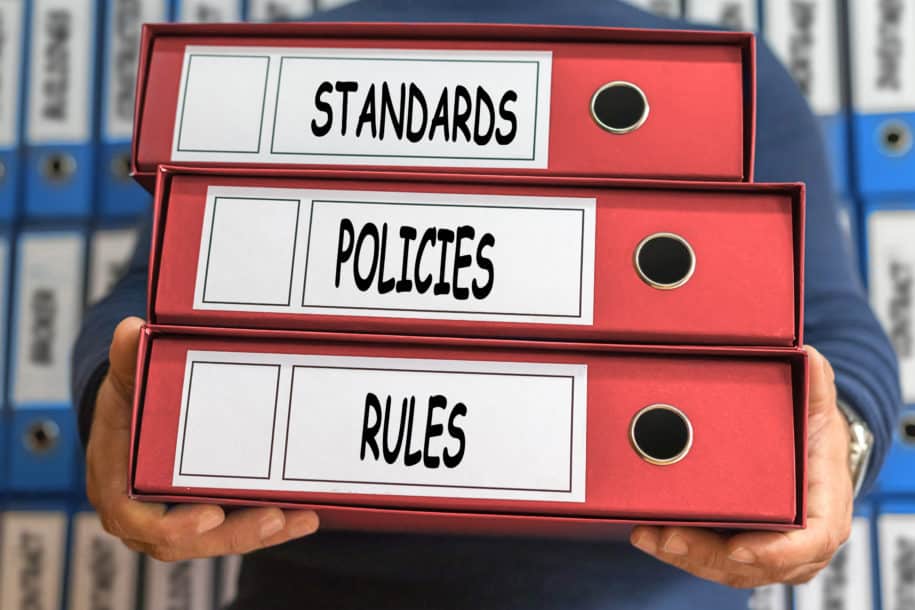Adapted from “Creating & Maintaining a Practical Based Safety Culture©”
I believe the term most often used for my ongoing information storage challenge is “packrat”. I have had this condition almost all my life and on occasion I get inspired to clean out the old boxes of files and collectables. This usually happens when I go to my shelving units to add a new box of valuable safety stuff and I find that there’s no more room. The last time this happened I decided it was again time to clean out my old paper files.
I have several boxes of Health and Safety Plans from clients and former employers. These all-important documents are essentially records of safety management systems and provide a real history lesson on the development and maturation of OH&S through the last thirty years. As I stacked these binders into two piles (one for the recycling and one to be returned yet again to the shelving unit) I thought that I would explore the similarities of this large variety of time stamped OH&S management systems fully documented and preserved in these binders.
For most companies, the Health and Safety Plan is the first demonstration of the desired company culture. In the binder we put not only what we want to accomplish, but how we are going to accomplish it. It’s a great start on the road to really making a place safe and healthy to work. We take the time to write our intentions down so we can communicate them to all who work for and with us. We tell the readers that we’d like it to be safe around here. Probably to no one’s surprise, my collection of Health and Safety Plans is really many versions of the same document. Here are the first three of nine common themes throughout all these binders:
1. Safety is important
Every binder begins with the same type of statement: “Safety is important here at ABC Corporation”. There are many different versions of the same management commitment that basically places safety on the corporate agenda. These fundamental statements of commitment have not significantly changed over the last three decades. The OH&S policy lives in these binders. We say that safety is important and then we tell everyone that it’s a shared responsibility. We usually state that it’s our intention to make our places of work safe and healthy, and as a minimum we’ll comply with applicable related legislation. We commit that we will make it both safe and legal.
2. There is an internal responsibility management system
The next important part of the binder is where we organize our thoughts about our OH&S management system. This is where the all-important safety elements get organized. Here are the common themes about how we establish responsibility:
- We are all in this together, so we all have a part to play.
- We all have defined responsibilities.
- We have some tools and processes we need to use.
- We have resources available to help us.
3. Accountability is the key to getting things done
This is where I first note a key change here over the last 30 years. More so today than in the past, these binders are defining accountability associated with the responsibilities. To tell a manager they are responsible for doing a safety task is only half of the formula. It’s important to tell responsible people that they will be held accountable. Ideally, these accountabilities are tied back to their performance appraisal system and compensation package. Do the safety work that you’re assigned along with other managerial accountabilities and you’ll reap the rewards and bonuses. A famous quote that has been attributed to almost every famous management consultant rings true in this section of the Health and Safety Plan: “What gets measured gets done, what gets rewarded gets results!” This quote, incidentally, is attributed to Dan Petersen, who I had the privilege of meeting and hearing him say those words.
The concept is simple enough. Tell people what a good job is and then measure that they did what they were assigned. Celebrate with them or coach them as required.
4. Manage the Work Environment
The things and places where humans do work are potential sources of injury and illness. Every Health and Safety Plan has a section to tell people to manage the work environment and tells responsible people to inspect the work areas to ensure that our tools, equipment, materials and the actual workspace are free from observed hazards. We need to pay attention and ensure that the risks of these things hurting people are minimized.
5. Manage Peoples’ Behaviours
There has been a great deal of talk about safe behaviour over the past decade or so. ‘Human based’, ‘people based’, ‘culture based’- all these terms are fundamentally describing the same things. How people behave matters a great deal to their safety.
Training is mentioned in all the Health and Safety Plan examples. There has been a clear shift over the past three decades from trying to manage attitudes to managing behaviours. Great management systems understand that people’s behaviours are motivated and managed through activators and consequences. Training employees on safe work practices is an important part of ensuring no one gets hurt. The other important part of the process is to ensure that they actually do the behaviours that they learned in the training.
6. Measure and Report
There has been a distinctive shift from the focus of measuring lagging outcomes to a measurement of leading indicators of safety. A shift from measuring the negative measures of safety (or lack of safety), number of injuries, days lost, severity and frequency rates has been replaced by a better understanding of what we do to make a place safe and healthy. Measuring and rewarding the accomplishment of safety activities (leading indicators) is much more the focus in the more modern Health and Safety Plans.
7. Learn from Our Mistakes Through Investigation
Another common feature is a section about incident investigation in these binders. A variety of forms are included. What is clear in these ever-evolving binders is that the level of complexity and process has changed over time. This could be seen by some as a positive development. I’ll save my comments on making this too complex for another time.
8. Let’s Talk About the Issues
Communication through group meetings is a tried-and-true technique that not only demonstrates that safety is important to us, but it gives us an opportunity to exchange concerns and ideas. Over the last three decades the importance of having meetings hasn’t significantly changed. There is, however, a trend to expand our engagement to all our people rather than the historic approach to only include a select group of safety committee members.
9. The Internet
This is obviously one major change we can all observe. The internet has had its impact on OH&S in a huge way. It’s become a large part of many corporate safety management systems and facilitated communication about safety issues that simply wasn’t possible in the recent past. Listservs, blogs, and government, private, commercial and association websites are a wealth of information on OH&S issues. The natural attitude is that just because it is on the net does not mean it’s right (of course if you’re reading this on the internet this is an example of some correct information!). The amount of good information available on the net has increased along with a similar amount of bad information, so please research, and find out as much as you can-just do so with caution and some common sense.
If your task is to develop your company’s first Health and Safety Plan or to enhance the one you already have, give a colleague a call. They probably have an extra one laying around you can use to start your draft! Better still, search the internet. There are more examples of OH&S safety management systems than you could possibly read in a lifetime. If you’re really stuck, send me an email and your credit card number, I have a box of binders I can ship to you.
For more details: Click here & Contact SafetyStratus Now
AUTHOR BIO

Alan David Quilley is the President and owner of Safety Results Ltd., in Sherwood Park, Alberta. Alan is a Canadian Registered Safety Professional who has worked in the Health and Safety Field for over three decades. His safety management career includes leading the OH&S efforts in the Municipal, Transportation and Health Care sectors. Alan’s experience as an OH&S Officer for the Alberta Government rounds out his extensive experience in a variety of industry sectors including Oil & Gas and Forestry.
An author, consultant and compelling speaker, Alan Quilley has made a career of learning and applying the leading edge of occupational health & safety. Combining over three decades of real-world experience, a passion for “doing it right” and a presentation style that entertains and educates, he is a unique voice on the issue of safety excellence.
Bibliography
Quilley, A. D. (2010). Creating & Maintaining a Practical Based Safety Culture. MBQ Solutions Incorporated.



